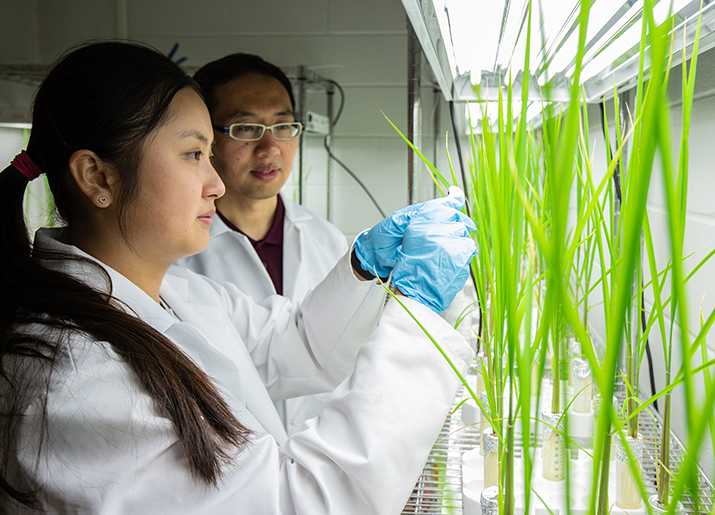
Rice is a primary dietary component for half of the world’s population and is grown on every continent on Earth. In light of the important part rice plays in the human diet, this international crop also has a history of causing health issues from heightened levels of arsenic consumption. Researchers at the Texas A&M University College of Engineering are conducting research on how to reduce arsenic uptake in rice plants during their cultivation with the goal of decreasing the number of health issues caused across the globe from this important staple crop.
Leading this effort is Dr. Xingmao “Samuel” Ma, an associate professor in the Zachry Department of Civil Engineering. Ma explains that the process of cultivating rice makes it much more open to absorbing arsenic. However, the amount of arsenic absorbed can depend on where the rice is grown in, the chemicals present in the soil and a variety of other factors that occur on a nanomolecular scale.
“Our goal is to understand the uptake process,” Ma said. “When you water plants, the water contains some of the arsenic and other chemical compounds, so we want to know how these compounds, the soil and (other) factors, affect the level of the arsenic uptake in the plant.”
One chemical compound used in Ma’s research, zinc oxide nanoparticles, has been shown to inhibit the uptake of arsenic in certain varieties of rice while also acting as a fertilizer. Treating rice paddies with this chemical could potentially limit arsenic uptake, while still producing a high yield crop.
“Rice has very special chemical transporters that allow the easy transport of arsenic into the rice crop,” Ma said. “But how easily that rice takes up the arsenic depends on the speciation of the arsenic, which is another factor that we are considering.”
Arsenic speciation refers to the different species of the arsenic, and what forms they can take, which can affect how the chemicals are absorbed into rice roots and then transported to the shoots and grains.
Going forward, Ma and his research team are reaching out to the U.S. Department of Agriculture with the intent of expanding their work beyond the smaller hydroponic studies, which involves growing rice without soil, into studies within soil systems to better understand how zinc and other elements can affect arsenic uptake.
“We’re planning to grow them in soil in the future,” Ma said. “Within the soil system there are microorganisms which will also impact the speciation of the arsenic, we will see how it is changed when you expose the arsenic to these nanoparticles.”
While Ma’s research will require further exploration, the concept that this work could impact the health of millions of people for the better has remained a positive motivation over the course of the project, which is in its second year.
“We as a species eat a lot of rice, which means we have a lot of people that suffer from arsenic contamination,” Ma said. “I think that highlights the importance of this study, and we think that if we can limit the arsenic uptake by 50 percent, the levels of exposure to people would be so much less harmful.”
